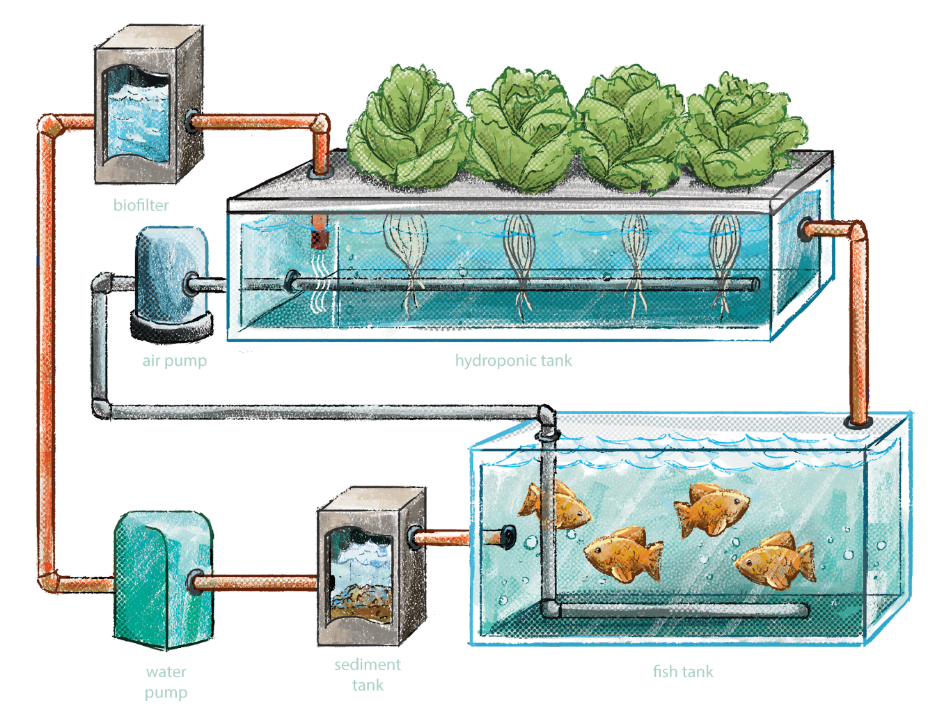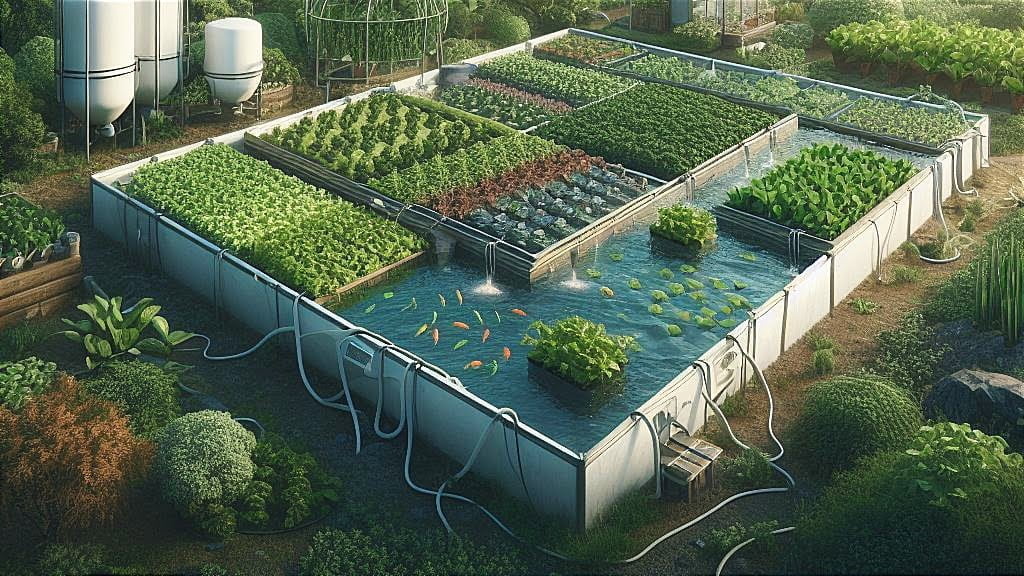Dive into the world of Aquaponic Gardening in 2024 and unlock the secrets to a flourishing home-based ecosystem where fish and plants harmoniously thrive. This innovative approach seamlessly melds aquaculture and hydroponics, fostering a symbiotic relationship that transforms your home into a self-sustaining haven of greenery. In this guide, we’ll explore essential tips for success, navigating the intricate balance between aquatic life and plant cultivation. Join us on a journey to uncover the art of cultivating a bountiful garden, where aquaponics not only becomes a method but a transformative and rewarding experience for the at-home gardener.
Table of Contents
1) Begin with a Firm Foundation
A solid foundation is the foundation of any successful aquaponic system. Choose a flat surface, whether indoors or outdoors, to avoid uneven water distribution, which can cause stress on the structure and reduce system performance. Consider utilizing a robust and level table or platform to support the weight of the fish tank and grow bed when putting up an indoor aquaponic system, for instance.
2) Choosing the Right Fish
The selection of fish is critical in aquaponics. Consider temperature tolerance, rate of growth, and compatibility with the aquaponic environment. Tilapia is a popular choice due to its resilience and flexibility, although catfish or trout may be better suited to your individual circumstances. Trout may be an appropriate choice for a temperate environment aquaponic system. Investigate the individual needs of the fish to ensure they thrive in your selected environment.
3) Maintaining Ideal Water Conditions
Water quality is critical for aquatic and plant life. Test pH, ammonia, nitrate, and nitrite levels on a regular basis. Adjustments may be required to keep the water in the appropriate range (pH 6.8-7.2) for plant nutrient absorption. Invest in a high-quality water testing kit and develop a practice for monitoring water parameters. If you notice that your pH levels are out of range, consider adding pH stabilizers or natural buffers such as crushed coral.
4) Introduction of Beneficial Bacteria
Beneficial bacteria are important for the nitrogen cycle because they transform fish waste into plant-friendly nutrients. Introduce a bacterial supplement to jump-start this cycle and restore the system’s biological balance. Nitrosomonas and Nitrobacter bacterial strains can aid in the conversion of ammonia to nitrate, hence promoting a thriving aquaponic habitat.
5) Choose the Proper Plants
While many plants can thrive in aquaponic systems, some are more suited than others. Popular selections include lettuce, herbs (basil, mint), and fruiting plants such as tomatoes and peppers. To preserve a harmonious balance, select plants with similar nutrient requirements. Begin with easy-to-grow herbs like basil and mint. These not only adapt well to aquaponic conditions, but they also offer flavor to your meals.

6) Provide Sufficient Lighting
Adequate lighting is essential, especially for indoor systems or areas with limited sunlight. LED grow lights are low-energy and provide the spectrum required for plant growth. To maximize productivity, make sure your plants get the recommended amount of light each day. Choose full-spectrum LED grow lights with variable intensity. Keep lights at a safe distance from the plants to avoid light burn while encouraging healthy growth. Adequate lighting is essential, especially for indoor systems or areas with limited sunlight. LED grow lights are low-energy and provide the spectrum required for plant growth. To maximize productivity, make sure your plants get the recommended amount of light each day. Choose full-spectrum LED grow lights with variable intensity. Place lights in appropriate locations.
7) Monitor Temperature and Oxygen Levels
Temperature and oxygen levels should be monitored: Fish and plants thrive in specific temperature ranges. Monitor and adjust water temperature on a regular basis to meet the needs of your chosen fish species. Additionally, proper aeration is required to maintain optimal oxygen levels in both fish and plants. To keep the water temperature within the desired range, use a dependable aquarium heater. Consider adding an air stone to the fish tank to improve oxygenation.
8) Practice Fish Feeding Discipline
Overfeeding can result in excess waste, which can negatively impact water quality. Feed your fish sparingly, and make sure they finish their food within a few minutes. To avoid unnecessary stress on the system, adjust feeding amounts based on fish size and age. Feed small amounts several times per day rather than a large amount all at once. This mimics the fish’s natural feeding pattern and reduces the risk of overfeeding.
9) Frequent System Inspections
Frequent inspections guarantee your aquaponic system’s general health. Examine the integrity of the system, pumps, and plumbing to identify any possible problems early. Prompt problem solving increases the lifespan and effectiveness of your system. Make a weekly system check checklist. Check for leaks, make sure pumps are operating properly, and look for wear or obstructions in the pipes.
10) Patience is the Key
It takes time for aquaponic systems to reach equilibrium. Keep an eye out for changes in plant growth, fish behavior, or water quality. Adjustments may be required, and a keen eye will assist you in maintaining a thriving ecosystem. Keep a journal to keep track of system changes. Take note of any changes made and their effects on both fish and plant health. This method of observation will help you fine-tune your aquaponic system for the best results.
In conclusion, successful aquaponic gardening requires careful attention to key principles. Start with a solid foundation, choose fish wisely based on environmental factors, maintain optimal water conditions through regular testing and bacterial supplements, select suitable plants with similar nutrient requirements, provide adequate lighting, monitor temperature and oxygen levels, practice disciplined fish feeding, conduct frequent system inspections, and above all, exercise patience. For more in-depth information and answers to specific questions, enthusiasts can refer to this comprehensive article: Aquaponics Questions & Answers. It serves as a valuable resource to further enhance understanding and ensure the success of your aquaponic system.










